St Piran's Day: Why Cornwall celebrates an Irish saint
- Published
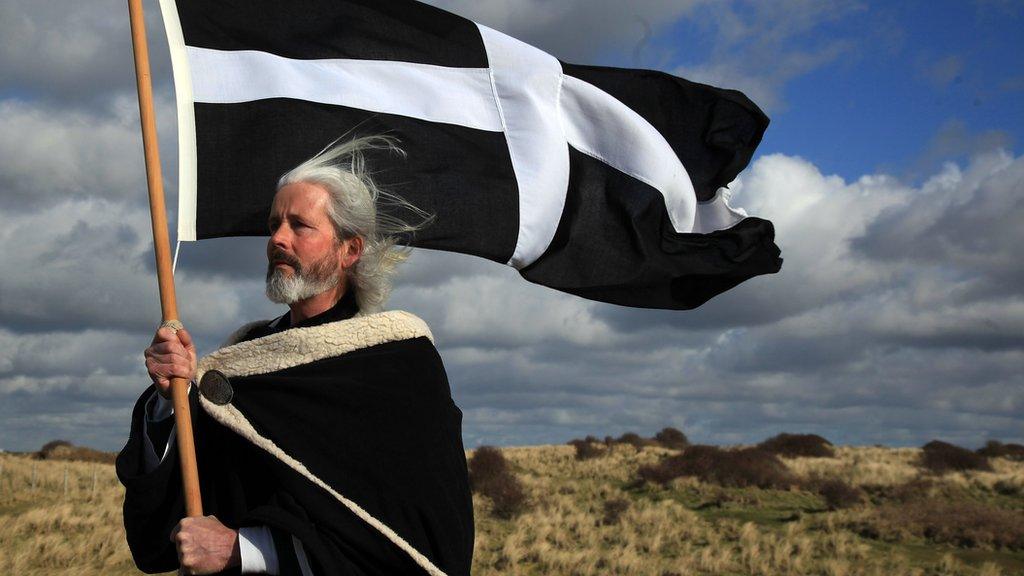
Actor Colin Retallick plays the role of St Piran during the annual St Piran processional play
Cornwall has long been called the Land of Saints. With about 140 different saintly men and women associated with the county, it's not hard to see why.
There are literally dozens of place names, churches, wayside crosses and holy wells connected to one saint or another - from Saint Adwen to Saint Winwaloe.
So how was Saint Piran, an Irishman known for his indulgence, adopted as the figurehead for Cornwall? Writer and blogger on the subject of Cornish history, Elizabeth Dale, explains all.
The first thing to know about St Piran is he was something of an enigma. Having lived more than 1,000 years ago, records for the period are understandably scant to non-existent.
It is therefore very difficult to actually pin the real man down, to separate fact from legend, but in a way that seems only fitting. After all, saints were no ordinary beings, they did not lead ordinary lives - they were miraculous.
When did St Piran arrive in Cornwall?
Legend has it that St Piran arrived in Cornwall soon after the Romans left, some time in the 5th Century.
It is believed he came here as a Christian missionary from Ireland, perhaps after spending some time in Wales, and he also journeyed on to Brittany in France.
Both of these places also have churches and shrines dedicated to him.
It is the circumstances of St Piran's journey to Cornwall that is perhaps the most famous miracle attributed to him.
It is said when he was expelled from Ireland by an angry king he had been trying to convert to Christianity, St Piran was tied to a millstone and thrown into the sea.
However, rather than drown, he and the stone floated.
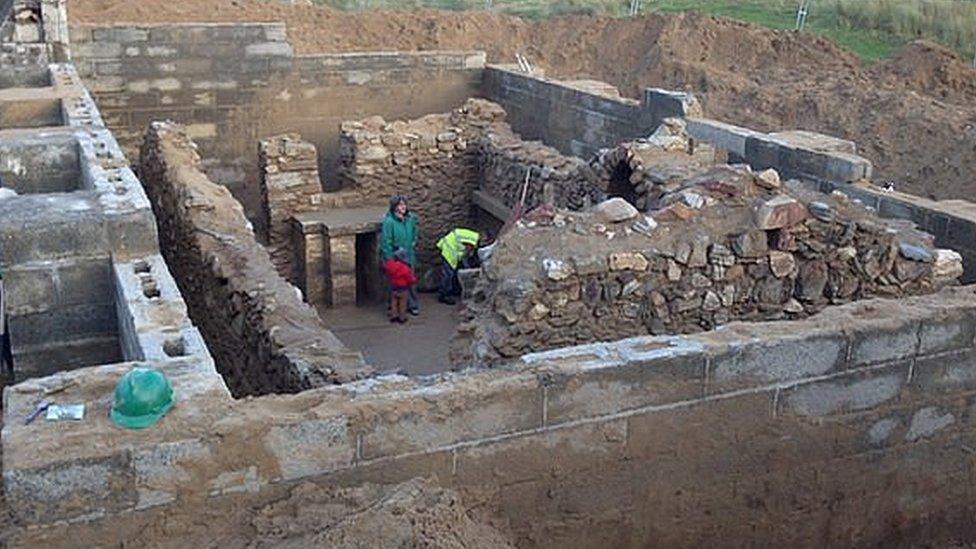
St Piran's oratory is considered by many to be the first church in Cornwall and perhaps the oldest church in Britain
Legend has it he floated all the way from Ireland to the sands of what is now known as Perranporth on Cornwall's north coast.
In recent years this tale has been re-interpreted in several ways. Some have suggested that the millstone was in fact a stone altar that some Celtic priests actually carried with them as a sort of portable church
Others believe it represents a coracle, a kind of simple circular boat made of animal skin stretched over a wooden frame.
Whatever the case, St Piran settled in Cornwall by the mid-5th Century and began to found a fledgling religious community.
What are the St Piran sites of significance?
He built his oratory, considered by many to be the first church in Cornwall and perhaps the oldest church in Britain, among the sand dunes at Perranporth.
It remained an important religious site until the 9th Century when it was abandoned to the ever-encroaching sands.
The ruin was then "lost" until 1789 when a man called Christopher Jenkin was walking across the dunes and spotted the end wall of the church sticking out of the sand. Since then, the oratory has been excavated (several times).
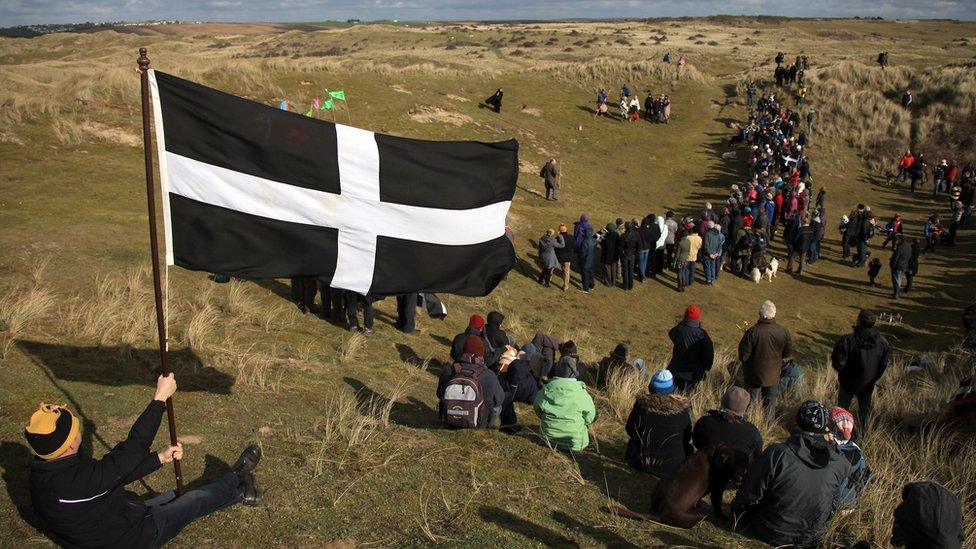
Legend has it that it was St Piran who showed the Cornish how to smelt tin
The remains of that ancient building, and the ruin of the second church built to replace it in the 10th Century, are the focus of the annual St Piran's Day parade on 5 March every year.
Beyond Perranporth there are many place names in Cornwall that still bear St Piran's name - such as Perranwell, Perranarworthal, Perranzabuloe and Perranuthnoe - but the first settlement named after him was "Carnperan", meaning "rock of Piran", which was recorded on a charter in 960.
The granite cross that still stands in the dunes close to the oratory today was noted as a boundary stone called St Piran's Cross around the same time, also making it more than 1,000 years old.
What was St Piran known for?
During his long life in Cornwall (some say he lived 200 years) St Piran became very popular with the locals.
Besides converting many of them to Christianity, he also had a reputation for celebrating his faith with feasting and merriment. But, perhaps most significantly for the Cornish people, legend has it that it was St Piran who showed them how to smelt tin.
It became the basis for the industry that would define Cornwall's culture and economy for many generations.
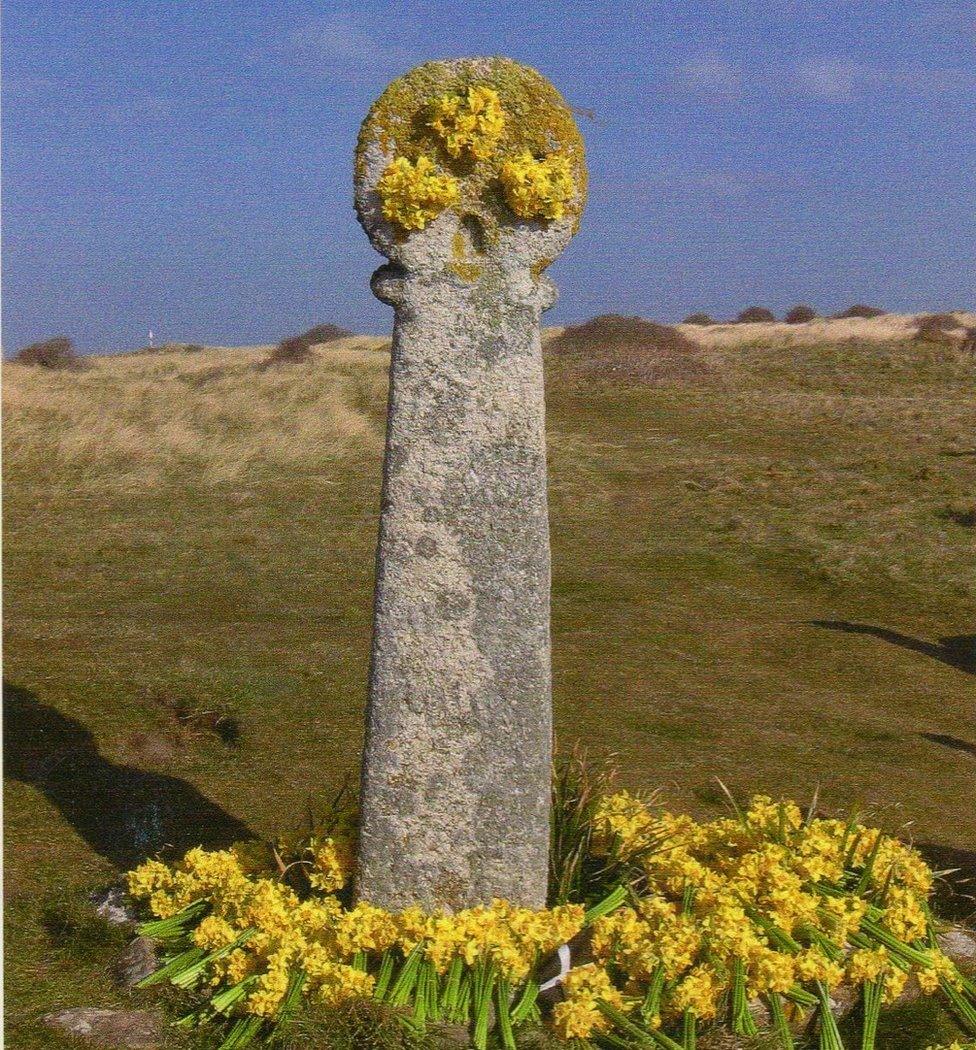
A cross of St Piran covered in daffodils
St Piran is still considered the patron saint of tin miners and the conversion of the raw black ore to the white liquid tin also inspired the colours of Cornwall's national flag, adopted circa 1838.
By the Middle Ages, the cult of St Piran had really taken hold in Cornwall. In the late 13th Century, a shrine at Perranzabuloe, containing the saint's skull, a wooden staff and his small copper bell, became one of the most important pilgrimage sites in the whole of the south west, even rivalling St Michael's Mount.
Why is St Piran's death important?
The story of St Piran's death has cemented his reputation as something of a merrymaker, earning him a permanent place in the hearts and minds of the Cornish people.
One story has it that the saint was executed by Teudar (or Tador), a king of Cornwall, in 480.
However, the more popular version is that the rather ancient saint tripped and fell into a well after drinking one too many ales.
The supposed day of his death, 5 March, became Saint Piran's Feast Day and was observed as a holiday in Cornwall well into the mid-18th Century.
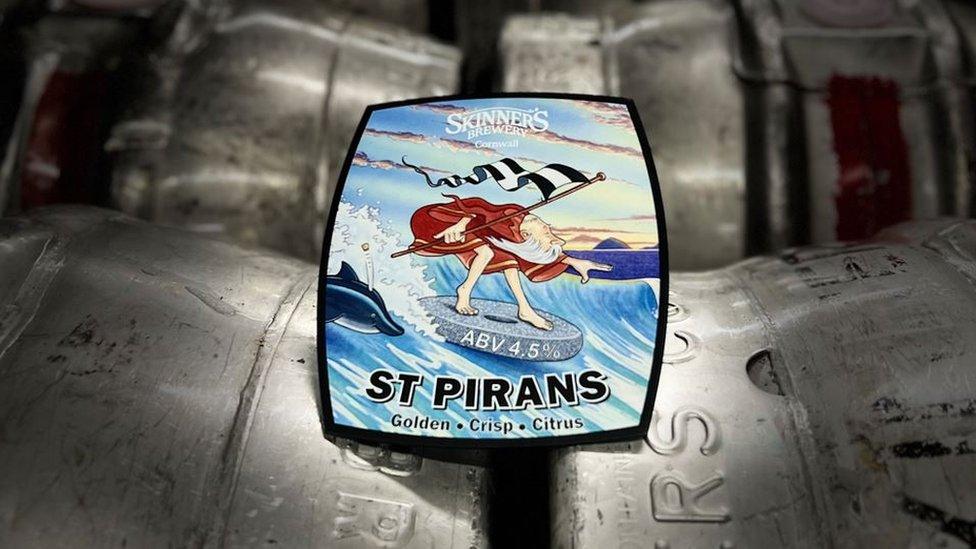
St Piran has a place in the hearts and minds of Cornish people
Some mining registers from that period record an "allowance for Perrantide", which was given to the men and boys on that day - a bit like a Christmas bonus.
A day off work and this extra money inevitably led to a certain amount of jollity and a fondness for St Piran.
Those who celebrated Perrantide were known as "Perraners" and became renowned for their enthusiastic celebrating of the holiday - so much so that a well-known insult at the time was to call someone "as drunk as a Perraner".
Why is St Piran so popular?
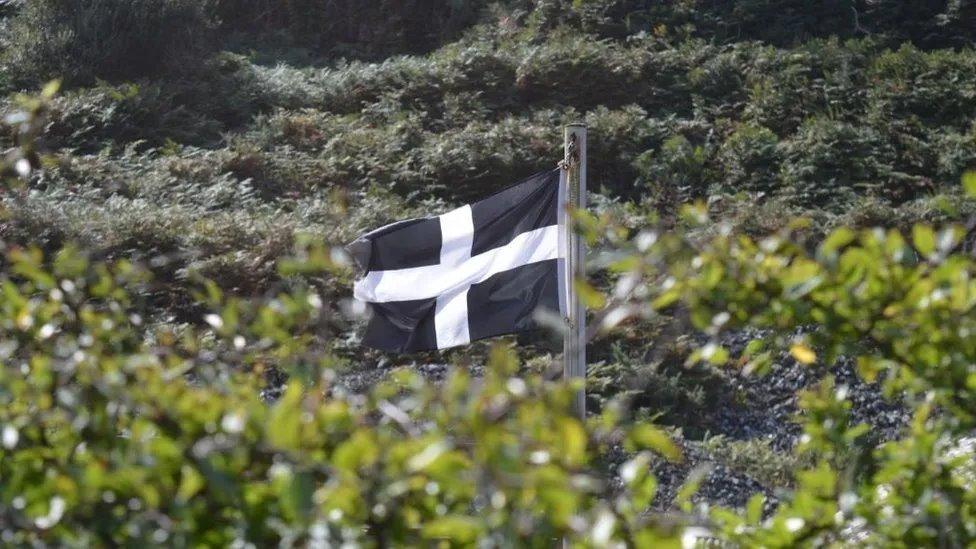
The saint's black and white flag can be seen all year round on shops, houses and stickers on car bumpers
St Piran's Day is still celebrated across Cornwall each year with parades, music and singing, although 5 March is no longer an official public holiday.
The saint's black and white flag can be seen all year round on shops, houses and stickers on car bumpers.
Other saints such as St Michael and St Petroc also claim to have played a vitally important role in the history of Christianity in Cornwall - but it is St Piran who has arguably become the most familiar of these holy men and is now acknowledged as our patron saint.
Although it is hard to put a finger on exactly why that is, perhaps his popularity is rooted in what he is said to have given us - the industry that sustained us for centuries and the excuse to have a little fun on our days off.

Follow BBC Cornwall on X (formerly Twitter), external, Facebook, external and Instagram, external. Send your story ideas to spotlight@bbc.co.uk, external.
Related topics
- Published5 March 2023
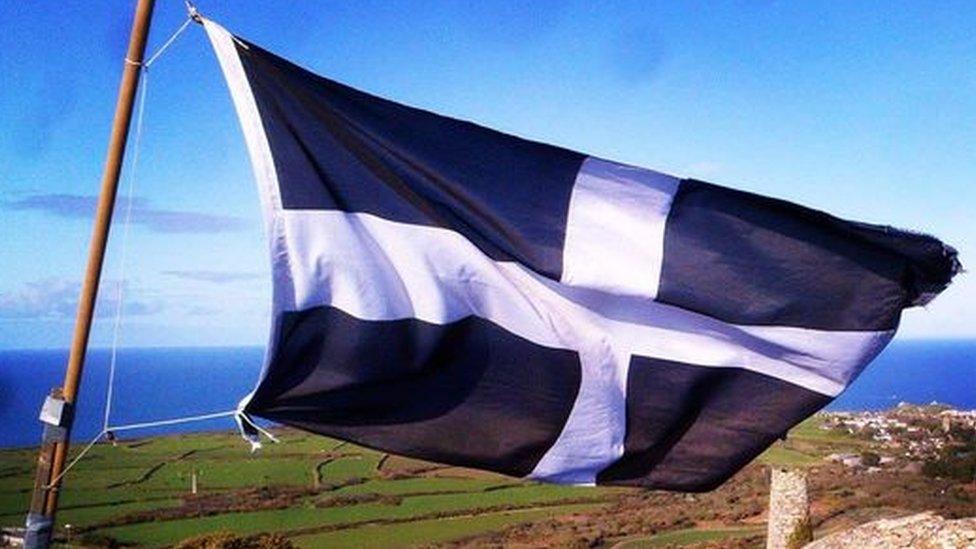
- Published26 April 2016

- Published18 August 2015
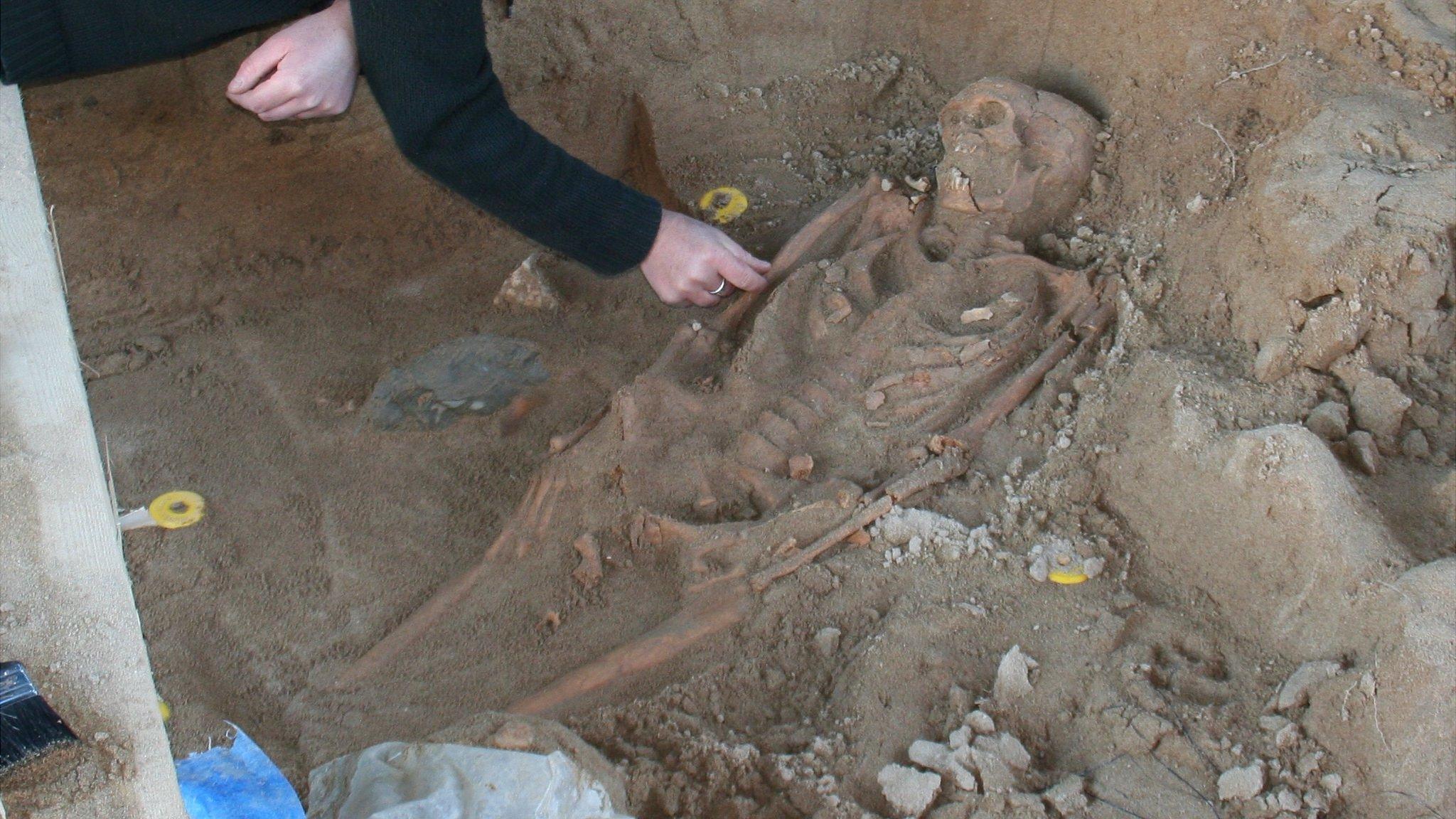
- Published16 November 2014
